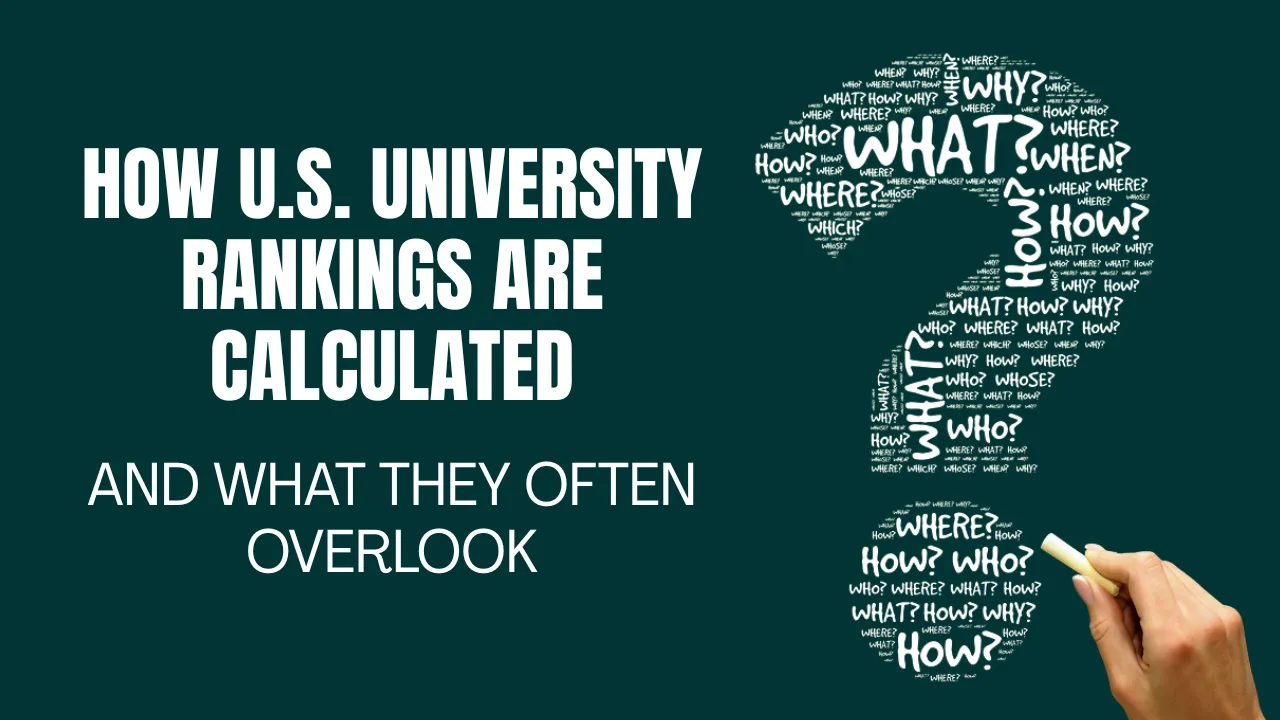U.S. university rankings: In the ever-competitive world of college admissions, U.S. university rankings play a powerful role. For many students and families, these rankings shape perceptions, influence application decisions, and even sway final choices. Institutions proudly advertise their ranking positions, while prospective students eagerly scroll through charts and lists to find the “best” fit. But how much should you rely on those numbers? And more importantly—do they really tell the whole story?
While rankings provide a snapshot of academic reputation, faculty resources, and student outcomes, they often skip crucial elements like campus culture, support systems, and affordability. Understanding how U.S. university rankings are created—and what they miss—can help you make more informed, personalized choices when exploring colleges.
U.S. university rankings
The mechanics behind U.S. university rankings involve a blend of quantifiable data and subjective surveys. Each ranking organization, such as U.S. News & World Report, Forbes, and QS World University Rankings, uses a slightly different formula. These formulas weigh factors like graduation rates, academic reputation, student selectivity, financial resources, and alumni engagement. While helpful for comparing institutions at a glance, these metrics often paint an incomplete picture. Factors like student wellbeing, real affordability, and program-level quality can be left out or underrepresented. For a balanced decision, rankings should be the starting point—not the final verdict.
Overview Table
| Ranking Metric | Approx. Weight | What It Represents |
| Graduation & Retention Rates | 22%–25% | Student success and institutional stability |
| Academic Reputation | 20%–25% | Peer evaluations by university leaders |
| Faculty & Financial Resources | 15%–20% | Teaching quality, infrastructure, investment per student |
| Student Selectivity | 10%–12% | Admissions competitiveness, SAT/ACT scores, GPA averages |
| Alumni Giving | 5%–8% | Graduate loyalty and institutional support |
| Social Mobility | 5%–7% | Support for first-generation and low-income students |
Formulas
University rankings rely on a formula—think of it like a recipe with specific ingredients. The most influential elements typically include graduation rates, reputation scores, faculty qualifications, and selectivity metrics. While these categories are measurable, they don’t account for qualitative aspects like personal growth or cultural fit. Each ranking body assigns its own weight to these factors, which can lead to different outcomes depending on what’s emphasized. For instance, a school ranked #10 in one list may be #25 in another due to varied prioritization.
Reputation
One of the most controversial components of rankings is academic reputation. Measured via surveys of university administrators, it’s inherently subjective. Imagine asking CEOs to rank companies they don’t work for—it’s based more on perception than performance. Lesser-known universities doing cutting-edge work may go unnoticed simply because they lack brand recognition. This means rankings can often reinforce existing hierarchies rather than highlight rising stars in education.
Resources
Faculty and financial resources form another major chunk of the rankings. This includes things like student-to-faculty ratios, research funding, faculty salaries, and spending per student. The idea is that higher investment leads to a better educational experience. While there’s some truth to that, more money doesn’t always mean better outcomes. Small liberal arts colleges, for example, might offer incredible mentorship without extravagant budgets.
Selectivity
Selectivity is typically seen through low acceptance rates, average standardized test scores, and high GPAs of admitted students. The logic is simple: harder to get into means more prestigious. However, this can be misleading. A university might be selective because of brand popularity, not because it offers superior learning experiences. Moreover, it risks devaluing schools that actively support non-traditional or underserved students.
Outcomes
Student outcomes have become increasingly important in recent years. These include graduation rates, job placements, average salaries, and loan default rates. This shift is welcome because it reflects what students actually gain from their education. Still, outcome data can be skewed by demographics. Schools in wealthier regions with well-connected students may naturally show higher income levels post-graduation, making the playing field uneven.
Blindspots
Despite their appeal, university rankings have several blindspots that students must consider:
- Campus Life: Does the school foster community, inclusion, and a healthy social environment?
- Mental Health & Support: Are resources like counseling, tutoring, and mentorship easily accessible?
- Affordability: Total cost vs. actual aid is often not reflected accurately in rankings.
- Faculty Engagement: Numbers don’t always reflect how invested professors are in student success.
- Experiential Learning: Programs that emphasize internships, projects, and real-world applications may not get much recognition in ranking formulas.
- Niche Program Strength: A school could be average overall but offer an exceptional program in a specific field—something rankings don’t always capture.
Advice
If you’re applying to colleges, use rankings wisely:
- Start with a ranked list, but don’t fixate on it.
- Compare programs, not just schools.
- Visit campuses (virtually or physically) to understand culture.
- Speak with students and alumni for unfiltered insights.
- Review financial aid options in detail.
- Evaluate career services, internships, and placement history.
- Consider where you’ll feel supported, challenged, and inspired.
Remember, a top-ranked school may not be the best for you. Education is personal. Choose a place that aligns with your goals and values.
FAQs
1. How are U.S. university rankings calculated?
They’re based on formulas that weigh factors like graduation rates, reputation, resources, and selectivity, each assigned different percentages.
2. Do rankings include student happiness or campus life?
No. These qualitative aspects are often ignored, even though they significantly impact your college experience.
3. Does higher tuition equal a better ranking?
Not always, but wealthier schools often score higher due to better resources—regardless of affordability or value.
4. Is being more selective a sign of better education?
Selectivity shows popularity or competitiveness, not necessarily better teaching or outcomes.
5. Should I base my college decision only on rankings?
No. Rankings are a helpful tool but shouldn’t replace research, campus visits, and personal reflection.
Final Thought
U.S. university rankings may dominate the college conversation, but they’re only part of the puzzle. They tell you something—but not everything. A high rank can impress, but it won’t guarantee a good fit, engaging faculty, or career readiness. Use rankings as a guide, not a gospel.
Call to Action
Looking for a college that truly matches your goals and personality? Start with the rankings, but dig deeper. Explore student experiences, academic offerings, and financial fit. Choose a university not for its number, but for the future it helps you build.



